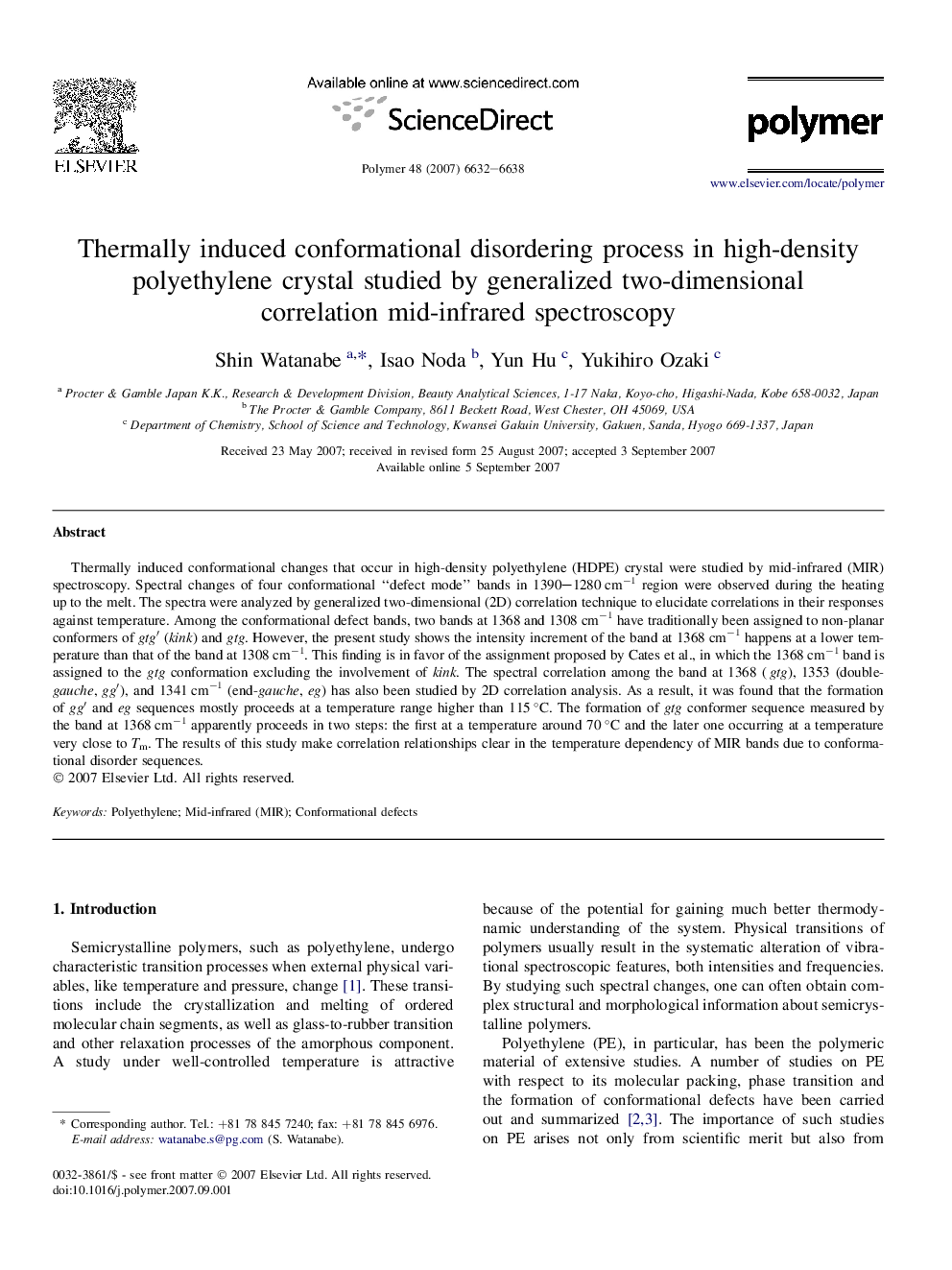| Article ID | Journal | Published Year | Pages | File Type |
|---|---|---|---|---|
| 5188400 | Polymer | 2007 | 7 Pages |
Abstract
Thermally induced conformational changes that occur in high-density polyethylene (HDPE) crystal were studied by mid-infrared (MIR) spectroscopy. Spectral changes of four conformational “defect mode” bands in 1390-1280 cmâ1 region were observed during the heating up to the melt. The spectra were analyzed by generalized two-dimensional (2D) correlation technique to elucidate correlations in their responses against temperature. Among the conformational defect bands, two bands at 1368 and 1308 cmâ1 have traditionally been assigned to non-planar conformers of gtgâ² (kink) and gtg. However, the present study shows the intensity increment of the band at 1368 cmâ1 happens at a lower temperature than that of the band at 1308 cmâ1. This finding is in favor of the assignment proposed by Cates et al., in which the 1368 cmâ1 band is assigned to the gtg conformation excluding the involvement of kink. The spectral correlation among the band at 1368 (gtg), 1353 (double-gauche, ggâ²), and 1341 cmâ1 (end-gauche, eg) has also been studied by 2D correlation analysis. As a result, it was found that the formation of ggâ² and eg sequences mostly proceeds at a temperature range higher than 115 °C. The formation of gtg conformer sequence measured by the band at 1368 cmâ1 apparently proceeds in two steps: the first at a temperature around 70 °C and the later one occurring at a temperature very close to Tm. The results of this study make correlation relationships clear in the temperature dependency of MIR bands due to conformational disorder sequences.
Keywords
Related Topics
Physical Sciences and Engineering
Chemistry
Organic Chemistry
Authors
Shin Watanabe, Isao Noda, Yun Hu, Yukihiro Ozaki,
